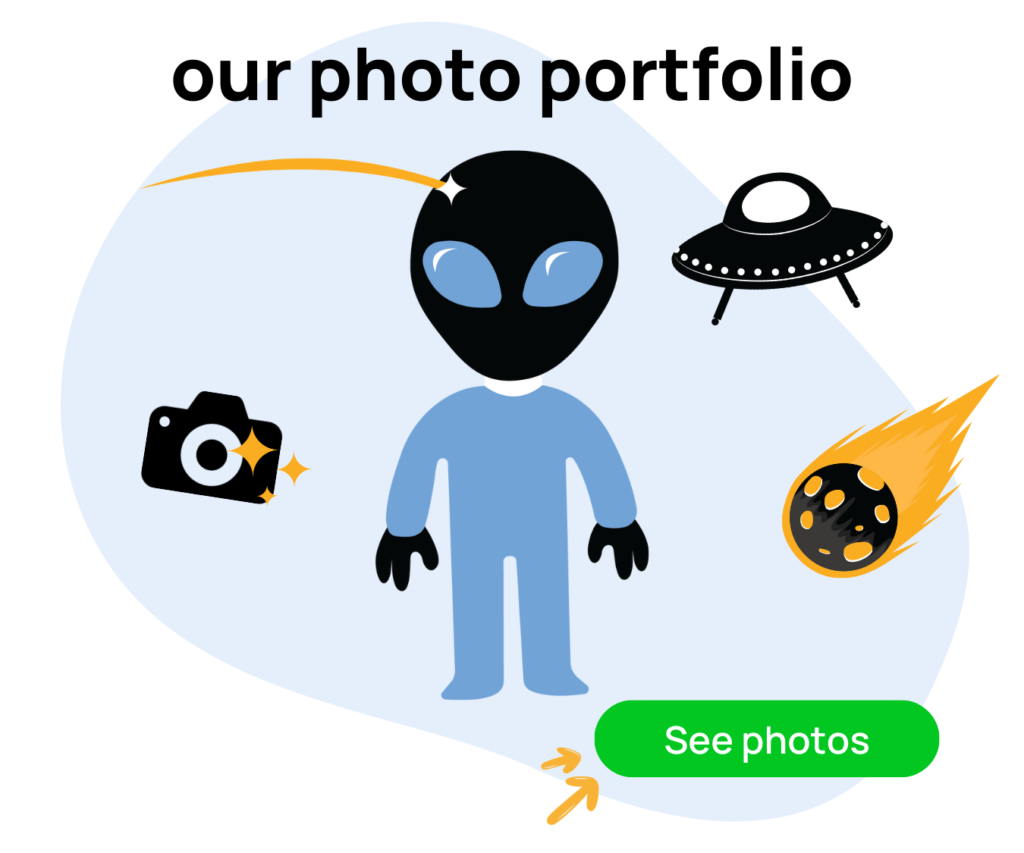If you’re an Amazon seller not getting the expected results from your PPC ads, then you’re missing out on some crucial strategies and recommended practices for increasing your sales on Amazon. This blog highlights essential Amazon PPC insights that sellers need to pay attention to in 2022 to boost their ROI and RoAS. Before we get into it, my name is Ian Smith, and I run an Amazon Marketing Agency called Evolve Media Agency.
What We Do At Evolve Media Agency
We help Amazon sellers optimize their Amazon listings with photos, videos, and copy to get their listings converting as high as possible through product photoshoots, video shoots, on and off Amazon marketing, Email Marketing, and Google Ad campaign management.
To book a free strategy and consulting call with us, visit emaamz.com.
If you’re a DIY Amazon seller and want to optimize your Amazon listing on your own, we’ve got a powerful Amazon listing checklist for you at zonchecklist.com. We broke down all of the different sections of an Amazon detail page and created different sales strategies for each area of a listing. You can check these items off as you and your team implement the different sales strategies.
Now, back to the blog.
Amazon PPC Insights for 2022: Strategies, Pitfalls & Need-to-Knows
This blog is an adaptation of our interview with DK from Entourage, an Amazon PPC Marketing Agency. You can watch the full video on our YouTube. Here are some key strategies and highlights from our conversation with DK, Amazon PPC Ads supervisor at Entourage.
Good Insights to Pay Attention to in 2022?
Amazon’s PPC ad campaign measures have changed over the last few years. The market is now fast-paced, and keeping up with the growing changes is essential to boost your conversion and click-through rates from PPC ads.
One of the most significant growth measures many sellers undermine is knowing how bidding works on Amazon PPC campaigns. Unlike the early parts of 2018, there are so many ways to advertise that demand sellers know how bidding works. Together with bidding, the other significant factor contributing to your position on Amazon Search Results is your past performance. We explain this in detail in the next point.
Similarly, sellers also need to pay attention to all the forms of advertisement available to them. And this includes all the Off Amazon marketing opportunities available. These other platforms are excellent for generating good exposure for your product and brand.
The Relationship Between Past Data and Your Amazon PPC Performance
Your Amazon past performance (performance or your entire brand and the particular product) is crucial to your Amazon PPC Ads performance. These metrics are essential to the Amazon algorithm to decide who wins the first placement on the search result. But why is this important? And how does that affect you as a new seller?
Social proof is vital to Amazon’s algorithm. You need reviews, ratings, and past sales from consumers that the algorithm can rely on to judge your bid. In the absence of that, Amazon is unable to trust your brand or product. This makes it expensive to run PPC ads if you’re a new seller since you have to force your way in. You can do this through very optimized product listings. Even without past performance data, how you set up your product listings contributes to the Amazon algorithm’s perception of your brand and product. Be sure to stay relevant with sales copy and keyword targets to push your way to generate performance data.
Amazon earns from your PPC ad campaigns as they get commissions from your sales. With little or no past performance data, they are unsure how well you’ll do should they put you up on top of the search results. However, brands with excellent past data have proven to yield results that Amazon can rely on.
Amazon’s Grace Period for New Products and Brands
It is not all bad starting out on Amazon as a new seller. Amazon offers a grace period to new sellers who join the platform. It’s a roughly 90-day period that Amazon uses to assess the viability of new products and brands on its platform. The algorithm helps you gather momentum on your product and brand in this timeframe. Consider the 90 days as an audition to make a good impression on the Amazon algorithm. With a well-optimized listing, you’re in a position to take advantage and hold on to the momentum you build even after the period has elapsed.
It’s also essential for new sellers to offer some sort of a discount or promo code to your potential shoppers. With very little social proof, offering a coupon on your product can sometimes be a significant deciding factor for a shopper to purchase your product. Coupons also drive a sense of urgency in your sales. Consumers mostly take advantage while you offer them to avoid buying at a much higher price later.
Be very vigilant in the first 90 days you begin to sell a product on Amazon. Take advantage of coupons and discounts to ramp up your conversion rates, gather social proof, and make a good impression on the Amazon algorithm.
How to Deal with Fast Declining Inventory?
With a well-performing PPC ad comes a fast declining inventory. How you manage product decline plays a crucial role in the performance of future Amazon PPC ad campaigns. Most sellers on Amazon are quick to raise product prices to reduce demand. And subsequently slow down the demand for the product to top up their inventory. However, this approach has proved to have negative consequences on future Amazon PPC ad campaigns. Let’s explore why.
Amazon’s algorithm, as already explained, places significant emphasis on past performance. Any activity that sends a wrong picture to the Amazon algorithm affects your Amazon PPC performance. The Amazon algorithm doesn’t care about your declining inventory and would continue to give you good impressions. Slowing sales by price hikes tell the Amazon algorithm that shoppers no longer find your product worthwhile. So don’t tank your impression with the Amazon algorithm; go out with a bang! This way, you can return, reshuffle your sales copy, and pick up from where you left.
Turning Off Campaigns to Deal With Declining Inventories
How about turning off your Amazon PPC ad campaigns to deal with a fast, dwindling inventory? Still, the algorithm looks at what have you done lately; have you improved customer experiences? Do you have good impressions over the past 60 days or more? A campaign that has not performed over the period (paused) requires starting afresh when you have new inventory.
Here’s how to start afresh—create new sales copy out of your old campaigns and start the campaign. This is a much better approach that picks up quicker since the Amazon algorithm recognizes that you are already relevant for those keywords in your campaigns or targets. The big idea here is to avoid restarting campaigns because they performed better in the past, and you had to turn them off for reasons such as a declining inventory. Instead, create new sales copy and start a new campaign for those keywords and targets.
The Role of Amazon’s ToS in Your Conversion Rate?
Amazon’s Terms of Service (ToS) are another essential factor to consider, not just for your PPC ad campaigns but for your entire brand and product listings. There are some sales copy, words, and phrases that, when used, can result in a shadow ban. Ensure that your product listing and sales copy align with Amazon’s ToS to avoid consequences like this.
Organic impressions are much more important than paid reach. Most buyers on Amazon are more likely to purchase a product that appears organically on the search results page than sponsored products. Unless you have a ton of social proof backing the sponsored product, missing out on this due to inappropriate practices can be detrimental to your growth.
There are also similar consequences on how many impressions and conversions you make if you run an Amazon PPC ad campaign. It’s therefore essential to ensure that your campaign doesn’t breach any of Amazon’s ToS. Avoid little mistakes and arcade practices such as keyword stuffing, as Amazon’s algorithms are well advanced to detect them. Have proper indexing with all the keywords and all the copy you have, including your title, bullet points, and Enhanced Brand Content (EBC). While not currently indexed by Amazon, the latter is indexed by Google.
Optimize Your EBC Area & Product Listings for Mobile First
It’s also common to see Amazon sellers have a subpar EBC area that tells no story and has little impact on their product listings’ impressions and conversion rates. Amazon’s Enhanced Brand Content area is a perfect avenue for sellers to add more sales copy, images, and product details. Use the section to deliver an accurate representation of your product.
It’s hard to buy something online. You don’t know what you’re getting until Amazon ships it. Those additional pictures in the EBC area give shoppers more information to make a buying decision and set expectations properly so that you don’t have a return on your hands.
Also, 80% of Amazon’s browsing occurs on a mobile browser or an Amazon app. You must therefore ensure that the content on your page looks good on mobile screens. What a lot of people do is they’ll browse on their phone, they’ll add your product to their cart, and then they’ll go home and make a purchase from their desktop or laptop. So definitely make sure that the mobile version of your listing is up to par with what it should be.
Wrapping Up!
We also have a FREE Amazon listing checklist that is updated regularly to help your DIYers optimize your product listings and avoid consequences like being shadowbanned on Amazon. And if you want to discuss anything in the blog further with us, book a FREE consulting call at emaamz.com!
We hope this blog helped you uncover some pitfalls and insights into the Amazon PPC campaign ecosystem. Thank you for reading!





